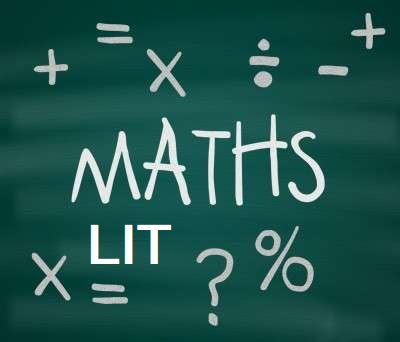Is Mathematical Literacy in South Africa a Blessing or a Barrier to the Future?
- Maths Guy
- Aug 13
- 2 min read
Introduction

Since its introduction into the South African education system in 2006, Mathematical Literacy has been a subject of both praise and criticism. Designed as an alternative to pure Mathematics, it aimed to equip learners with practical, everyday mathematical skills such as budgeting, interpreting graphs, understanding statistics, and making informed decisions in a data driven world. But nearly two decades later, the question remains: Is Mathematical Literacy building opportunities or limiting them?
What is Mathematical Literacy?
Mathematical Literacy (often called "Maths Lit") focuses on real-life applications rather than abstract theories. It prepares learners to handle tasks like:
Calculating interest on loans and savings
Reading maps, timetables, and invoices
Analyzing social and economic trends
Understanding health, environmental, and political statistics
The Benefits of Mathematical Literacy
Accessible to More Learners
Many students find pure Mathematics intimidating. Maths Lit offers a less daunting approach, reducing dropout rates and improving learner's grades.
Life Skills for Daily Use
From understanding bank statements to comparing cellphone contracts, learners gain financial literacy and problem-solving skills directly useful in adult life.
Supports Non-Math Careers
For careers in hospitality, retail, marketing, arts, and social work, Maths Lit provides sufficient mathematical grounding without overwhelming students with unnecessary complexity.
Bridging Education and Reality
By using real-life contexts such as budgeting a household or planning a trip, Maths Lit makes mathematics relevant and engaging.
The Disadvantages of Mathematical Literacy
Limited Career Options
Careers in engineering, medicine, actuarial science, architecture, and IT generally require pure Mathematics. Learners who choose Maths Lit early may find themselves locked out of these opportunities later.
Perception of Lower Standards
Some universities and employers view Maths Lit as a “soft option,” which can harm a candidate’s competitiveness in the job market.
Difficult to Switch Later
Learners who realize in Grade 11 or 12 that they want to pursue a math-intensive field face major challenges in catching up on pure Mathematics content.
Potential to Widen Inequality
If disadvantaged schools push most learners into Maths Lit due to lack of resources or skilled teachers, it could reinforce systemic inequality in higher education and employment.
Should Mathematical Literacy Be Banned?
Completely banning Mathematical Literacy would be short sighted. For many students, it is the difference between passing matric and dropping out. However, it should not be offered as the easy way out instead, schools should:
Offer strong career guidance in Grade 9 or earlier before subject choices
Improve pure Mathematics teaching so more learners can cope
Encourage Maths Lit only for learners whose career paths truly don’t require pure Mathematics
Remove the stigma by ensuring it is taught with depth and quality
Conclusion
Mathematical Literacy is neither a miracle solution nor a complete failure it is a tool. In the right hands, it empowers learners to navigate the world with confidence. In the wrong system, it can unintentionally limit dreams. South Africa should keep Mathematical Literacy but refine its purpose: make it a pathway to opportunity, not a barrier to ambition.




Comments